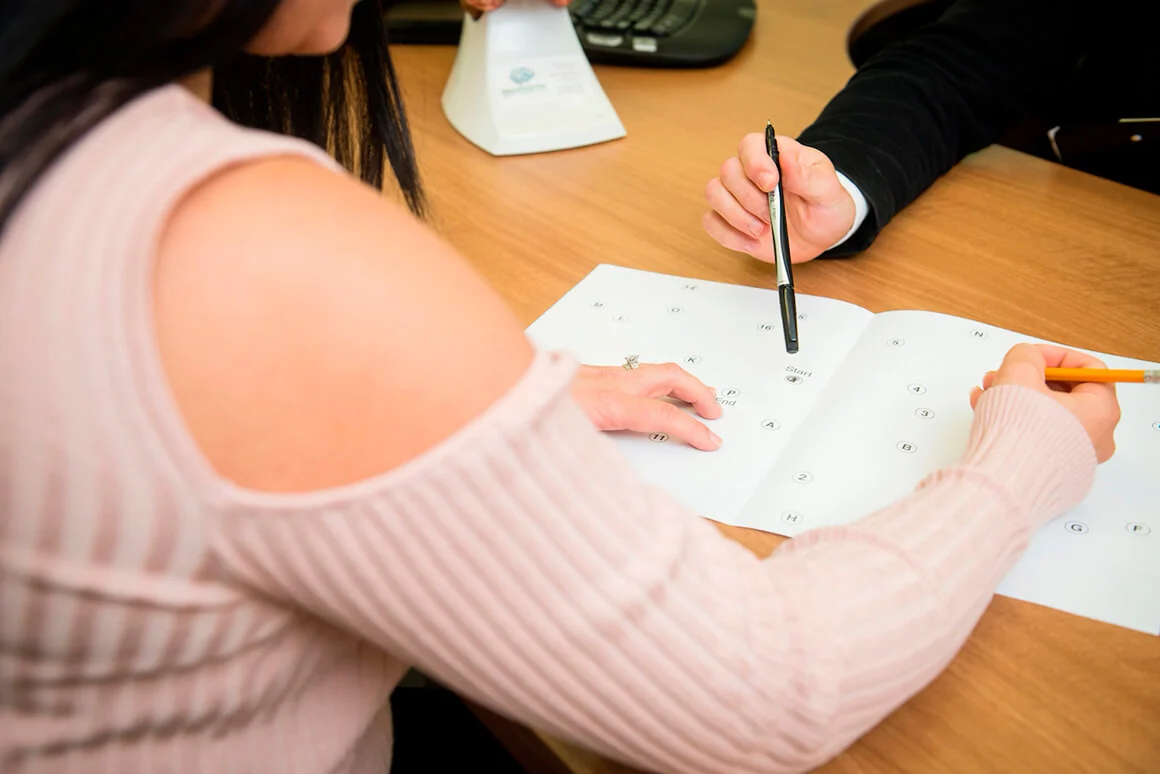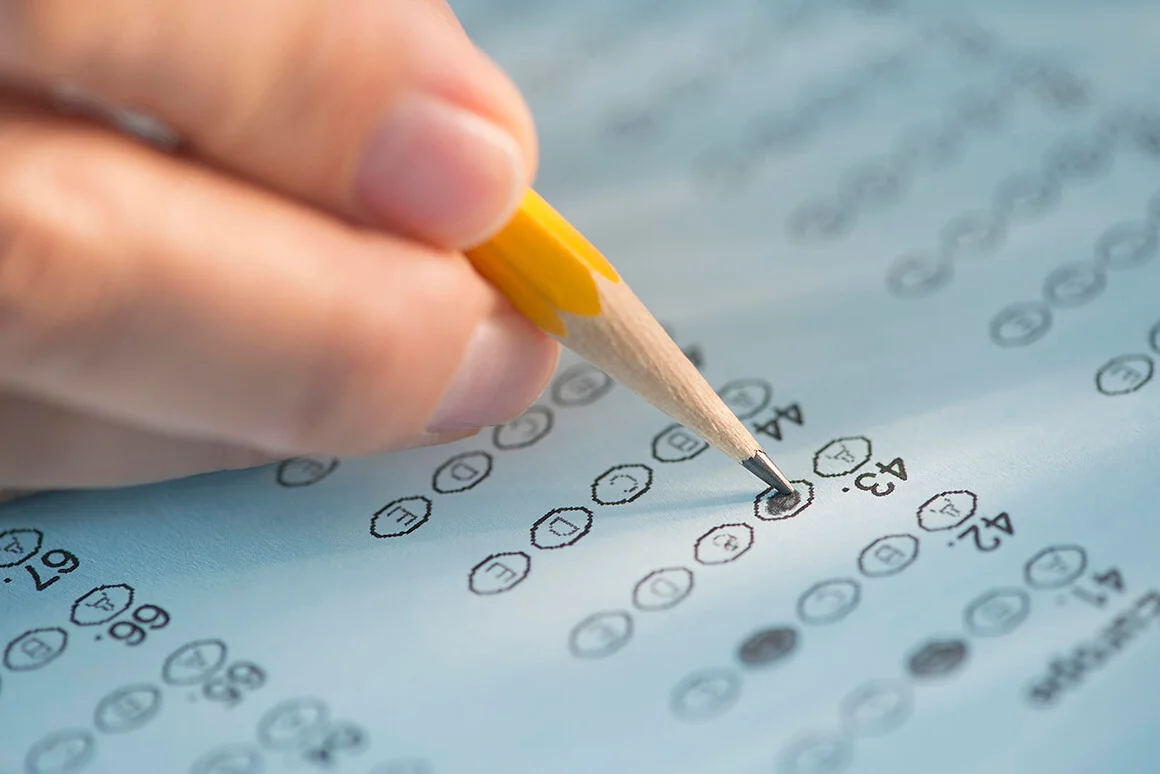Mental health is an important component of a fulfilling life. However, just like with physical health, many people don’t pay enough attention to their mental well-being. They may not notice changes in their mood, emotions, or behavior, which often leads to the development of various mental health issues.
Tests for anxiety and depression can be the first step for those who want to take care of their psyche. They allow you to determine the presence of anxiety or depression, assess the degree of their severity and determine whether you need to seek help from a specialist.
In this article, I will talk about the existing tests for anxiety and depression and help you choose the one that suits you. I will also explain their significance for mental health, how to interpret the results correctly, and what to do if they indicate the presence of problems.
Review of different types of tests for anxiety and depression
There are many different tests for anxiety and depression that can help assess the level of anxiety and depression in a person. Here are some of them:
- Beck Depression Inventory (BDI) is a self-report test used to assess the level of depression in adults and adolescents. It includes 21 questions that assess symptoms such as sadness, loss of interest in life, fatigue, poor appetite and insomnia. Below is a more detailed description of this test.
- Hamilton Rating Scale for Depression and Anxiety (HRSD/HRSA) is a clinical tool that is used to assess the level of depression and anxiety in patients. It includes 17 questions assessing physical and psychological symptoms of depression and anxiety.
- State-Trait Anxiety Inventory (STAI) is a self-report test used to assess anxiety levels in adults and adolescents. It includes 40 questions assessing the state of anxiety at the moment (the “State of Anxiety” scale) and the tendency to anxiety in general (the “Anxiety as a Personality Trait” scale).
- Zung Self-Rating Depression Scale (SDS) is a test that is used to assess the level of depression in adults. It includes 20 questions assessing mood, appetite, sleep, energy levels and other depressive symptoms.
- Krogh’s Checklist is a self-report test used to assess the level of depression in adults. It includes 10 questions assessing symptoms such as sadness, loss of interest in life, poor appetite and insomnia.
- The General Depression Inventory (BDI) is a test that helps determine the presence of depression and assess its severity. The BDI consists of 21 questions, each with four answer options. The test results are interpreted based on the total score that the test taker received. The higher the score, the higher the depressive level.
- Goldberg Anxiety and Depression Scale (GADS) is a test that measures anxiety and depression. It consists of 14 questions, each of which has four answer options. HADS only detects the presence of symptoms, not a diagnosis.
- Montgomery-Asberg Depression Rating Scale (MADRS) is a test that measures the severity of depression. It consists of 10 questions, each of which is scored on a scale from 0 to 6 points. The test results are interpreted based on the total score that the test taker received. The higher the score, the higher the severity of the depressive state.
- Fear Index Test is a test that measures the level of anxiety and phobias. It consists of 30 questions, each of which has four answer options. The Fear Index Test allows you to determine the presence and type of phobias, as well as assess the level of anxiety in general.
- Hamilton Anxiety Scale (HAM-A) is a test that measures anxiety levels. It consists of 14 questions, each of which is scored on a scale from 0 to 4 points. Test results are interpreted based on the sum of the scores obtained. The higher the score, the higher the level of anxiety.

Beck Anxiety Inventory
The Beck Anxiety Inventory (BAI) is one of the most widely used anxiety tests. It was developed by American psychologist Aaron T. Beck in 1988.
The test includes 21 questions that assess various symptoms of anxiety, such as worry, fear of the future, tension and nervousness. Questions are designed to assess the frequency and severity of a person’s anxiety symptoms over the past week. Each question has four answer options, which are scored on a scale from 0 to 3 points.
Here are examples of questions that are included in Beck’s Anxiety Inventory:
- “Are you feeling tense or excited?”
- “Does the future worry you?”
- “Are you feeling anxious or tense?”
- “Are you afraid that something bad will happen?”
After a person has answered all the questions, their answers are tallied to produce a total score on a scale from 0 to 63. The higher the total score, the higher the anxiety level.
The Beck Anxiety Inventory is assessed using a standardized scale that indicates what level of anxiety corresponds to a certain score. Typically the results are interpreted as follows:
- 0-7 points: no or very low level of anxiety;
- 8-15 points: mild anxiety;
- 16-25 points: moderate anxiety;
- 26-63 points: high level of anxiety.
The Beck Anxiety Inventory can be used to diagnose anxiety disorders and evaluate the effectiveness of treatment. It is useful both for clinical research and for the practical work of psychotherapists, psychiatrists, psychologists and other mental health professionals.
This test has become very popular due to several reasons:
- First, it has high reliability and reproducibility of results. This means that test results are accurate and consistent across different conditions and times. This is important so that the test results can be trusted and used in clinical practice.
- Second, the Beck Anxiety Inventory was developed based on extensive research on anxiety and symptoms of anxiety disorders conducted by Aaron T. Beck and his colleagues. They have used a variety of methods and tools to identify anxiety and have developed a test that reflects a wide range of anxiety symptoms and provides an opportunity to assess its level.
- Third, the Beck Anxiety Inventory has simple and clear questions that are easily understood by people of different ages and cultural backgrounds. This makes it a useful tool for a wide range of mental health professionals, as well as for research in this area.
- Finally, the Beck Anxiety Inventory is widely used in clinical practice to diagnose and assess the severity of anxiety disorders, as well as to evaluate the effectiveness of therapy. It allows you to quickly and effectively assess the patient’s anxiety level and determine whether he needs treatment or not.

Beck Depression Inventory
The Beck Depression Inventory (BDI) is one of the most common tests for depression, which was developed by Aaron T. Beck in 1961. This test is used to assess the presence and severity of depressive symptoms.
The Beck Depression Inventory consists of 21 questions that describe various symptoms of depression, such as disturbances in sleep, appetite, mood, and feelings of fatigue and powerlessness. Each question is rated on a 4-point scale, with 0 indicating no symptom and 3 indicating the greatest severity. The scores of all questions are summed up, which allows you to determine the level of depression a person has.
The following are examples of questions used in the Beck Depression Inventory:
- Are you feeling sad?
- Do you feel guilty?
- Are you experiencing a loss of interest in life?
- Are you experiencing loss of appetite?
- Are you experiencing sleep loss?
- Do you feel tired or powerless?
- Are you experiencing a loss of self-confidence?
It is important to note that the Beck Inventory is not the only and definitive tool for diagnosing depression. It should be used in combination with other assessment methods such as a clinical interview, medical history and additional psychological tests.
Additionally, inventory results should be interpreted by a mental health professional, as there may be other causes of symptoms unrelated to depression.
The Beck Depression Inventory is one of the most popular depression tests in the world, and this is due to several factors:
- Widespread – the test was developed by Aaron T. Beck, one of the most famous and influential psychologists of the 20th century, which made it famous and popular among specialists in the field of psychology and psychiatry.
- Ease of use – the test does not require special skills to pass. This allows it to be widely used in various scientific and practical fields.
- High Reliability and Validity – It has been extensively tested and has been found to be one of the most reliable and valid instruments for assessing depression. This increases the attractiveness of the test for specialists who use it for diagnosis and assessing the effectiveness of treatment.
- Availability – The Beck Depression Inventory is available in many languages and can be used in a variety of cultural contexts.
- Universality – the test can be used to assess the level of depression in people of different age groups with various depressive mental disorders.
- Standardization – The Beck Depression Inventory is a standardized test. This means there is a normative sample against which patient outcomes can be assessed, which helps clinicians make more accurate diagnoses and determine the effectiveness of treatments.

Clinical interviews on anxiety and depression
There are several clinical interviews that can be used to assess anxiety and depression. Here are some of them:
- Structured Clinical Interview for Depression (SCID) – widely used to diagnose depressive disorders, including clinical depression and dysthymia.
- Structured Clinical Interview for Anxiety (SCIA) – Designed to diagnose a wide range of anxiety disorders, including generalized anxiety disorder, social anxiety disorder, panic disorder, and traumatic stress disorder.
- Structured Clinical Interview for DSM-5 (SCID-5) – used to diagnose a wide range of mental disorders, including depressive and anxiety disorders.
- Clinical Anxiety Disorders Interview Schedule (ADIS) – used to diagnose a wide range of anxiety disorders, including generalized anxiety disorder, social anxiety disorder, panic disorder and traumatic stress disorder.
- Mood and Anxiety Symptoms Interview (MASI) – used to assess mood and anxiety levels in patients with various mental disorders.
- Inventory for Depressive Symptomatology (IDS) – used to assess symptoms of depression and the severity of depressive disorder.
- Mood Interview Schedule (MIS) – used to assess mood and psychological symptoms in patients with various mental disorders.
- The Structured Interview Guide for the Hamilton Anxiety and Depression Scale (SIGH-AD) is used to assess the level of anxiety and depression in patients with various mental disorders.
The choice of a particular clinical interview depends on the goals and objectives of the assessment, patient characteristics, and other factors considered by the psychiatrist or psychologist.

Physiological tests for anxiety and depression
There are several physiological tests that can be used to assess anxiety and depression. Some of them:
- Electroencephalogram (EEG) – used to measure the electrical activity of the brain, including activity associated with anxiety and depression.
- Electrocardiogram (ECG) – used to assess heart function and measure physiological parameters associated with anxiety and depression, such as heart rate and heart rate variability.
- Electrodermal activity (EDA) – used to assess changes in electrical activity of the skin that may be associated with emotional reactions to stress and anxiety.
- Polysomnography (PSG) – used to assess sleep phases and other sleep parameters associated with depressive conditions.
- Functional magnetic resonance imaging (fMRI) is used to measure the activity of different areas of the brain and evaluate related functions, such as the regulation of mood and emotions.
- Blood hormone level testing – useful for assessing levels of hormones associated with anxiety and depression, such as cortisol, epinephrine, and norepinephrine.
- Urinary Cortisol Test – Cortisol levels may be related to stress and anxiety levels.
- Urinary Monoamine Test – Monoamines, such as serotonin and norepinephrine, are associated with mood and emotional reactions.
- Cognitive neurophysiological test – used to measure cognitive functioning and reactions to emotional tasks associated with anxiety and depression.
- Tests for levels of circulating biomarkers – some biomarkers, such as cytokines, can determine mood and emotional state.
As with the clinical interview, the choice of a specific physiological test depends on the goals and objectives of the assessment, patient characteristics, and other factors that may be considered by the mental health clinician or neurophysiologist.
Disadvantages of tests for anxiety and depression
Anxiety and depression tests can be useful tools for assessing mental health, but they also have a number of disadvantages:
- Limited – they are usually designed to detect symptoms of specific disorders only and may not take into account other factors that may affect a person’s mental health.
- Incomplete – tests do not cover all possible symptoms of anxiety and depression, nor do they take into account individual differences and the context in which disorders occur.
- Variability – different tests for anxiety and depression can produce different results, which often leads to ambiguity and misunderstanding.
- Inability to predict the future – they help identify problems, but cannot predict how those problems will develop in the future.
- Potential errors – tests for anxiety and depression can produce false positive and false negative results. False positives lead to unnecessary distress, and false negatives lead to insufficient care for people who need it.
- Subjectivity – self-report tests for anxiety and depression are based on self-report and subjective perception of symptoms, which may lead to inaccurate results.
- The necessity of proper interpretation – any psychological tests must be interpreted correctly to obtain useful results. Incorrect interpretation can lead to incorrect diagnosis and treatment.
- Limitations of applicability – some tests are limited by age, gender, culture and other factors, which often leads to inaccurate results when used in groups for which they were not designed.
- They do not replace a consultation with a psychologist – tests for anxiety and depression cannot replace a consultation with a specialist, since only he is able to correctly assess the symptoms and prescribe the necessary treatment.
- Overlooked the importance of social support, which can be a key factor in reducing depressive and anxiety symptoms.

How to choose the right test for anxiety and depression?
Choosing an appropriate test for anxiety and depression depends on several factors, such as the purpose of testing, age, gender, cultural and linguistic background, etc. Below are tips to help you choose the right test:
- Determine the purpose of testing. Before choosing a test, you need to determine what purpose is being served. If the goal is a general assessment of mental health, then it is necessary to choose a test that covers several aspects, such as anxiety and depression. If the goal is a more accurate diagnosis, then a more specific test for a particular disorder should be selected.
- Familiarize yourself with the different tests. There are many different tests for anxiety and depression, each with their own advantages and disadvantages. You should look at several tests and choose the one that best suits your specific needs.
- Make sure the test is scientifically valid. Before choosing a test, you need to make sure that it has been scientifically validated and the reliability and validity of its results are not in doubt.
- Consider cultural and linguistic considerations to ensure results are as accurate as possible.
- Consult a specialist. If you are unsure of your choice, it is better to consult a mental health professional who can help you choose the appropriate test and explain the results.
- Consider age. When choosing a test for anxiety and depression, you need to consider the person’s age. Some tests are more suitable for children and teenagers, while others are more suitable for adults.
- Consider the characteristics of the group, for example, if the test will be used to assess the mental health of the military, it is necessary to choose one that has been adapted specifically for them.
- Consider the test format. Tests come in a variety of formats, such as questionnaires, rating scales, etc. Always choose the one that is most convenient and understandable for the person taking it.
- Consider test availability and cost. Some tests may have fees and costs, or may not be available to some populations.
- Pay attention to recommendations for interpreting results. before choosing a test, you should familiarize yourself with recommendations for interpreting results in order to correctly understand the data obtained and make further decisions about treatment and support for the patient.
In general, tests for anxiety and depression are very useful for assessing mental health, but they must be used in combination with other assessment methods, such as clinical interviews and behavioral observation.
Conclusion
In conclusion, I want to emphasize that anxiety and depression tests are valuable tools for understanding one’s emotional state. They allow for the assessment of symptoms and the severity of anxiety and depression, and they help determine if a person needs professional assistance.
The article reviewed various types of tests, each with its own features that can help determine different aspects of emotional states. For example, anxiety tests assess general anxiety, social anxiety, or specific phobias, while depression tests evaluate the severity of depressive symptoms such as loss of interest in life, insomnia, loss of appetite, and more.
However, it should be understood that tests for anxiety and depression are not a diagnostic tool and cannot replace the consultation of a professional psychotherapist or psychiatrist. If you find yourself experiencing symptoms of anxiety or depression, you should seek help from a specialist. He or she will help determine the causes and extent of your emotional state, suggest treatments, and provide recommendations for improving your mental health.
Lastly, choosing an anxiety and depression test depends on the goals you want to achieve. For example, if you need to assess general anxiety, use the Hamilton test, and if you are interested in the level of depressive symptoms, you should pay attention to the Beck test. In any case, remember that tests are not the only solution, and it is important to seek help from a psychologist if you have symptoms of anxiety or depression.




